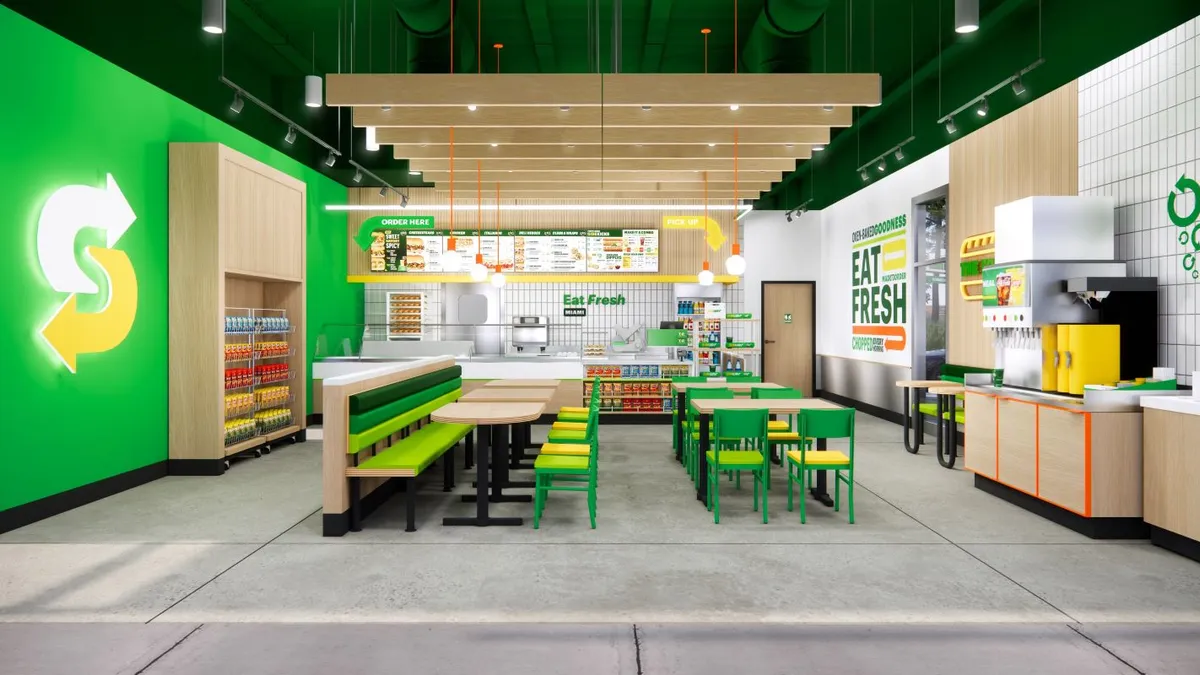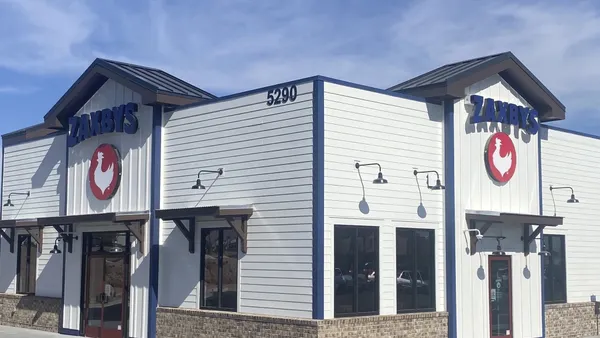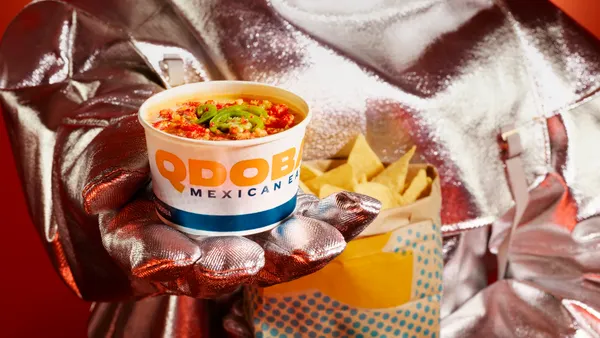Dive Brief:
- Subway introduced its Fresh Forward 2.0 image on Tuesday. The store design will roll out globally in 2025, the company said in a press release.
- Fresh Forward 2.0 will have vibrant decor elements such as bold wall graphics, more localized messages and signage, warmer wood tones, improved lighting and better support for Subway’s digital sales channels.
- The latest design builds on the Fresh Forward model, which rolled out beginning in 2017; over 20,000 restaurants globally were eventually remodeled or built in this image. Remodels have helped grow sales, improve brand perception and reinvigorate franchisees and their teams, Subway said.
Dive Insight:
Subway has been pushing domestic franchisees to remodel for some time, though only half of its 20,000 U.S. units had undergone remodels as of 2023, according to Restaurant Business.
Early adopters of Fresh Forward 2.0 are already building and remodeling to fit the new image in the U.S. But this will be a rolling process: Restaurants typically come up for remodel every seven to 10 years, and units will be remodeled in the new image according to this timeline, a spokesperson said in an email to Restaurant Dive.
Fresh Forward 2.0 has been tested across all regions and has received positive feedback from guests, operators and staff, the company said. Guests said during concept testing that the new design increased the chances of them dining in and visiting restaurants again.
"When Subway first launched Fresh Forward, it was more than just a remodel—it was a complete refresh and a competitive necessity for attracting guests and building pride among our restaurant teams," Mike Kehoe, global chief development officer of Subway, said in a statement. “Fresh Forward 2.0 is an exciting evolution of the design, ensuring we continue to future proof our business and deliver on our brand promises.”
Subway is also testing various technologies like self-order kiosks, order ready screens and kitchen display systems across various regions to boost the guest experience and improve efficiency.
Outside of the U.S., other markets making use of the design are the United Kingdom, Germany, France, Saudi Arabia, Panama and Australia.
The chain has been focused on aggressive, primarily international growth, with over 10,000 restaurants committed across more than 20 master franchisees. Last year, it signed one of its largest deals ever for 4,000 units over 20 years in China. It also will expand across Europe and Central America. In the U.S., the chain has been shifting its focus from single-unit operators to multi-unit franchisees that are better capitalized.
Other chains, including Potbelly, Burger King, El Pollo Loco, Perkins and Walk-On’s are undergoing remodels to help drive traffic and bolster the in-store experience. Through new prototypes, several of these chains are looking to reduce build-out costs to lower upfront costs for franchisees. Potbelly and Walk-On’s have already revealed smaller designs that are about half the size of their original restaurants. El Pollo Loco shared a new prototype a few weeks ago that will have low-cost elements and more energy efficient hoods and HVAC.














